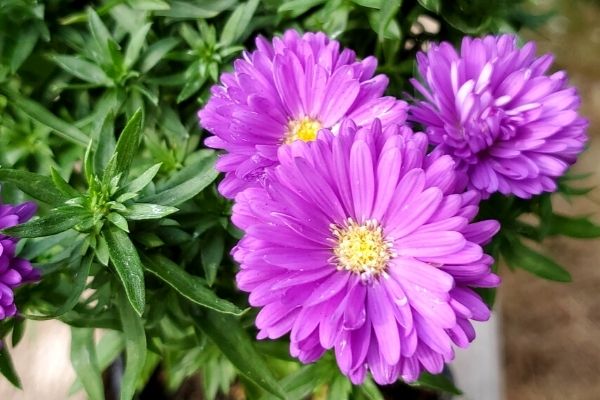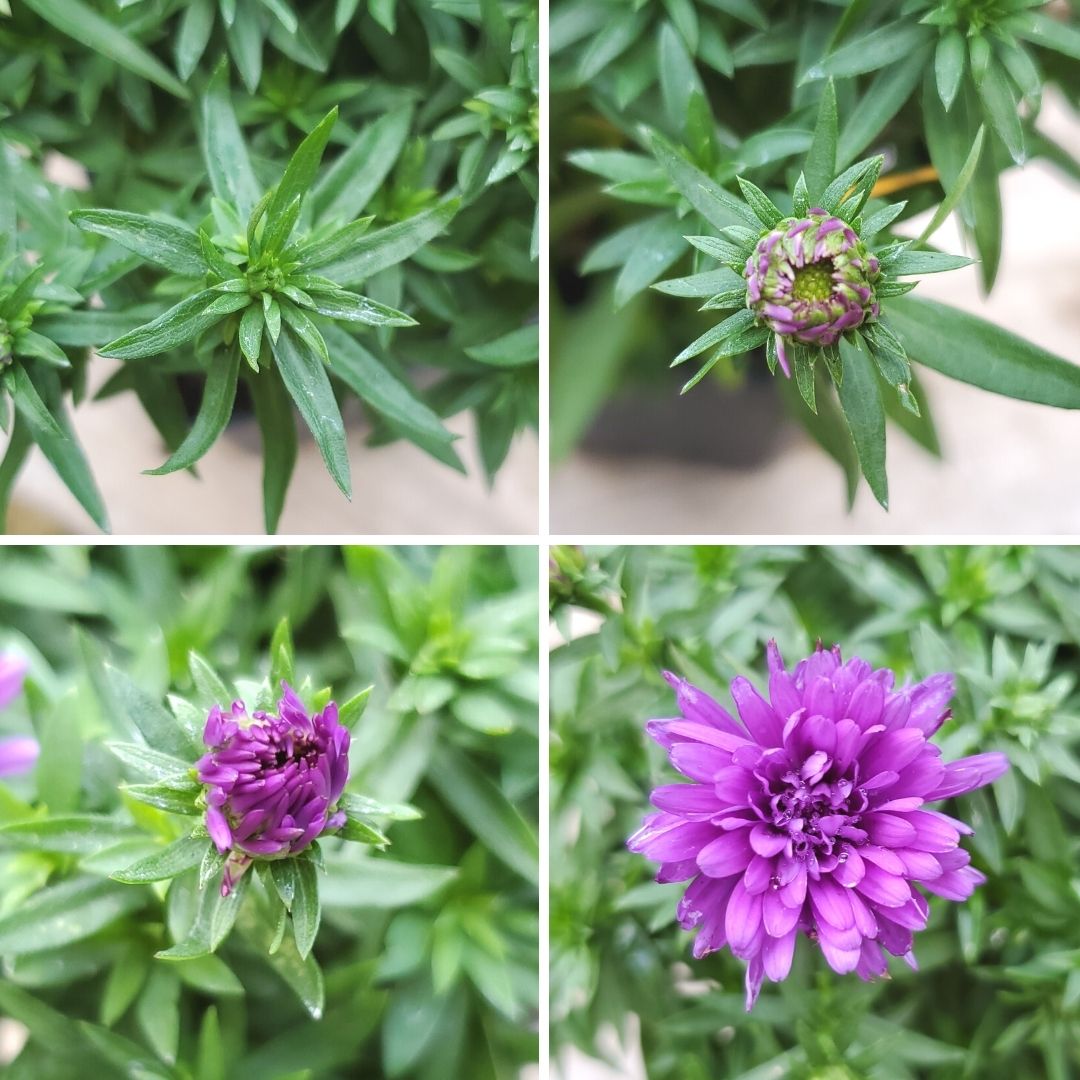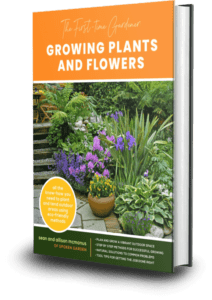Learn about fall-blooming Aster Magic Purple in this gardener’s guide of these beautiful flowers, including plant care, companion plants, and more.

Aster ‘Magic Purple’ in a container in our backyard.
We think you need aster ‘Magic Purple’ in your garden, and we’ll tell you why. It’s purple, it blooms in the early fall, and provides relief for pollinators after their massive supplies of pollen and nectar run at the end of summer.
Really, what more could you ask for from a plant?
These asters (Aster novi-belgii), aka Michealmas daisies or New York asters prefer cooler weather.
Perfect for fall-planted borders, containers, or mass plantings, these delightful flowers will provide pops of color and interest throughout your garden.
In this Aster ‘Magic Purple’ plant profile, you’ll learn about this aster cultivar, with companion planting ideas and basic plant care.
Aster ‘Magic Purple’ Quick Plant Care Facts
Sun Exposure Thrives in full sun, but can tolerate partial sun.
Water Needs Needs regular watering.
Soil Needs Prefers well draining nutrient rich soil.
Cold-Hardiness Zones USDA hardiness zones 4 to 8.
Bloom Time Flowers from late summer to late fall.
Flower Colors White, cream, blue, lavender, purple, rose, and pink.
Mature Height/Width Grows from less than 1 foot up to 4 feet tall and up to 3 feet wide, depending on cultivar.
Plant Spacing Space each plant anywhere from 18 inches to 30 inches apart, depending specific cultivars
Check out this flower growing sequence that we posted on our Instagram account!

The various growth stages of an aster ‘Magic Purple’ flower from our Instagram page.
Common Landscape Uses for Aster ‘Magic Purple’
These beautiful plants can be designed into your landscape in so many ways, including:
- Fall-blooming borders in mass plantings
- In containers tucked in with other fall-bloomers
- Used in rock gardens
- Planted in wildflower gardens
- Used in pollinator and butterfly gardens
Aster ‘Magic Purple’ Companion Plants
‘Magic Purple’ asters are ready to be friends with many other beautiful plants in your garden beds or containers. They really should be planted in the spring well after they’ve finished flowering in the fall, but if you must plant them in summer or fall, think about companions that would complement their color, size, or texture.
Consider pairing asters with other late summer or fall bloomers as long as they all have similar plant care needs.
Companion plants to consider:
- Chrysanthemums, aka hardy mums
- Milkweeds, like Swamp milkweed, etc.
- Goldenrod (But, be careful because it can take over your garden)
- Black-eyed Susans
- Lavender (many bloom into the fall, plus, more purple!)
- and many more!
Aster Flowers Conclusion
So, there you have it. ‘Magic Purple’ asters deserve a home in your fall garden for so many reasons. And, who doesn’t love purple flowers?
Keep them loved, watered, and well-cared for and they’ll return year after year to grace your garden with their presence.
Now we want to hear from you!
What other questions do you have about asters that we didn’t answer above? Let us know by leaving a quick comment below. Thanks!
Want to learn about other plants in your garden? Check out some of our previous plant profiles:
- Chrysanthemums: A Gardener’s Guide and Plant Profile
- Primroses: A Gardener’s Guide and Plant Profile
- Winter Pansies: A Gardener’s Guide and Plant Profile
See you in the garden!
~ Sean and Allison
P.S. Find us on YouTube, Pinterest, Twitter, Facebook, and Instagram so you don’t miss a thing!
Aster References:
Spokengarden.com is a participant in the Amazon Services LLC Associates Program, an affiliate advertising program designed to provide a means for sites to earn advertising fees by advertising and linking to Amazon.com
Learn about fall-blooming Aster ‘Magic Purple’ flowers in this gardener’s guide of these beautiful perennials, including plant care, companion plants, and more.


